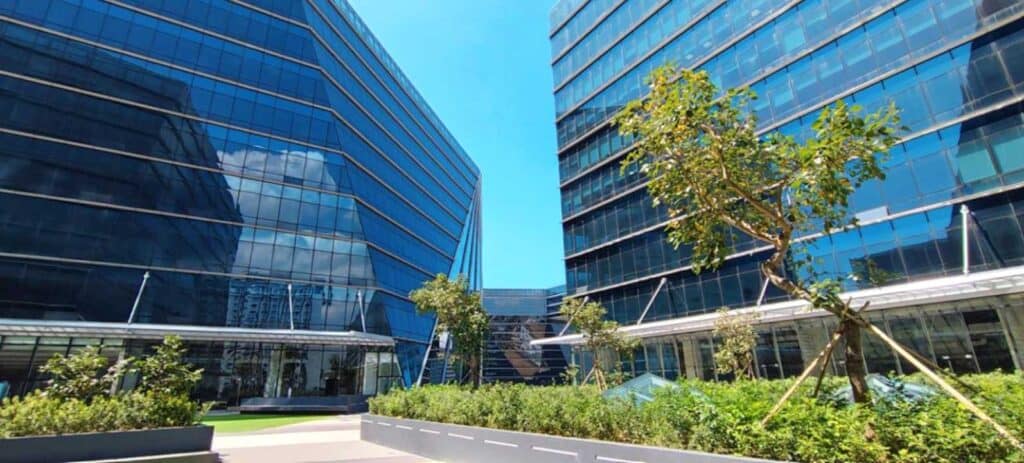
COST and complexity remain the biggest barriers to the uptake of green buildings in the Philippines, according to the lead of the International Finance Corp.’s (IFC) climate business in the country.
“There is an additional cost to building green. For a lot of developers that we work with at the World Bank Group, many are in the low-income (residential) segment… This level of the market is more price-sensitive,” Angelo Tan, country lead for IFC’s climate business, said during the BusinessWorld Insights and Project KaLIKHAsan forum on The Shift to Green Development at Seda Manila Bay on Jan. 26.
There are currently 111 EDGE-certified projects in the Philippines.
Developers also have to deal with the additional costs of securing green certifications for their projects.
“Why do you need to certify? We want to avoid greenwashing. We don’t want a developer to just say a building is green without third-party validation… You may save a lot on green measures but there is an additional cost to verifying,” Mr. Tan said.
EDGE (Excellence in Design for Greater Efficiencies) is a green building standard and certification developed by IFC, a member of the World Bank Group. There are currently 41 EDGE-certified projects in the Philippines, primarily in low-cost housing.
Other green building rating systems include Leadership in Energy and Environmental Design and the Philippine Green Building Council’s Building for Ecologically Responsive Design Excellence.
In terms of complexity, Mr. Tan noted that green buildings require more technical expertise which may discourage smaller developers from pursuing such projects.
Gie L. Garcia, co-managing director and chief sustainability officer at NEO, noted that the limited supply of renewable energy is another barrier to the wider adoption of EDGE Zero Carbon buildings in the country.
NEO’s real estate portfolio in the Philippines is the world’s first to have secured EDGE Zero Carbon certification. An EDGE Zero Carbon certification means the project is carbon neutral, with 100% energy savings achieved through re-newables or carbon offsets, 20% savings in water and 40% energy savings onsite.
“There is a scarcity of renewable power in the Philippines. You cannot jump into that [immediately]… You optimize whatever you have,” Ms. Garcia said during a separate panel discussion on green buildings.
Mr. Tan said sustainable real estate is urgently needed in the Philippines given its growing greenhouse gas emissions and vulnerability to disasters.
The Philippines has the highest disaster risk among 193 countries, according to the WorldRiskIndex 2023 report by Bündnis Entwicklung Hilft.
However, the country jumped six spots to 6th out of 67 countries in the Climate Change Performance Index 2024 report by the Germanwatch, the NewClimate Institute, and the Climate Action Network. The country outperformed its peers in the Asia-Pacific region with an overall score of 70.70, the highest in the region.
“This is something we need to cheer for and support,” Mr. Tan said on continuing the integration of environmental advocacies in real estate.
As its outlook for the next five years, the IFC is keen on private partnerships for developing net zero buildings in the residential, industrial, and hospitality sectors.
GREEN DEMAND
David Leechiu, chief executive officer of Leechiu Property Consultants, Inc., said the demand for green office buildings is mainly driven by multinational companies.
“It’s really being driven by the multinational companies and the office sector because they have to cater to the demands of their tenants,” he said during the panel discussion on the “Backbone of Green Buildings.”
Mr. Leechiu noted that only 50% of the tenants would require that their office building is green certified.
“In my thirty years of doing leasing for tenants and landlords, they will never pay a [premium] price for a green building,” he said.
Ms. Garcia noted the need for developers to comply with the National Building Code before going into green development. This is given the practice of retrofitting, or adding and restrengthening properties for efficiency, that is seen as a more viable option among developers.
“The problem with most of the developers right now is they don’t have enough manpower that actually know how to go beyond just spending capital expense into retrofitting,” she said.
“Not all retrofitting works for the property, and for all you know, you don’t need to spend money to innovate,” she added.
Mr. Leechiu noted that the government should just keep its regulations “simple and practical,” enforce existing laws and implement better sewage treatment and waste management systems.
“You really have to believe in it, want to have it, and do it,” Alexis L. Ortiga, vice-president at SM Prime Commercial Properties Group, said.
“It’s important that we have a strict framework that the industry uses to comply and ensure the public that we have green buildings,” Mr. Ortiga noted on the vital role of third-party certification to combat greenwashing.
Jolan Formalejo, vice-president for inventory generation at Aboitiz InfraCapital Economic Estates, also noted the economic benefits of green building adoption.
“By producing these buildings, we elevate quality of life and also attract more investors because this is aligned with what the rest of the world is doing,” he said.
Mr. Formalejo said developers should make a continuous effort to integrate green values in corporate goals and have a dedicated team to sustain this.
“We have one chance to construct these buildings, so let’s do it right,” he said. — Miguel Hanz L. Antivola
If you like this article, share it on social media by clicking any of the icons below.
Or in case you haven’t subscribed yet to our newsletter, please click SUBSCRIBE so you won’t miss the daily real estate news updates delivered right to your Inbox.
The article was originally published in Business World.







More Stories
Vista Land Celebrates 50 Years with Sandiwa: An Event Honoring Leadership, Legacy, and the Filipino Dream of Homeownership
Vista Land Celebrates Love Month in Ilocos Region
Vista Land Bridges Cebuano Heritage and Progress with Valencia by Vista Estates